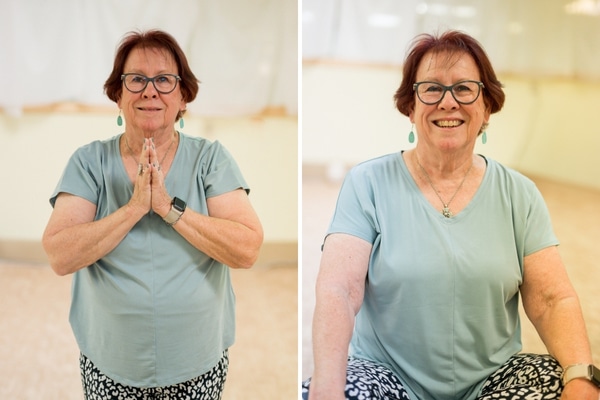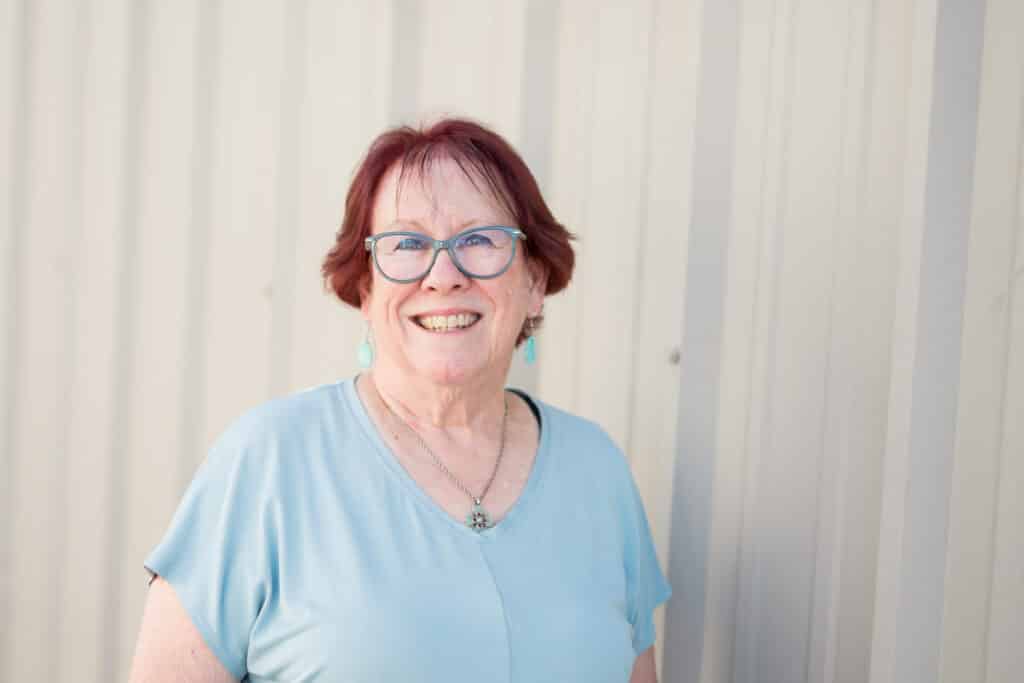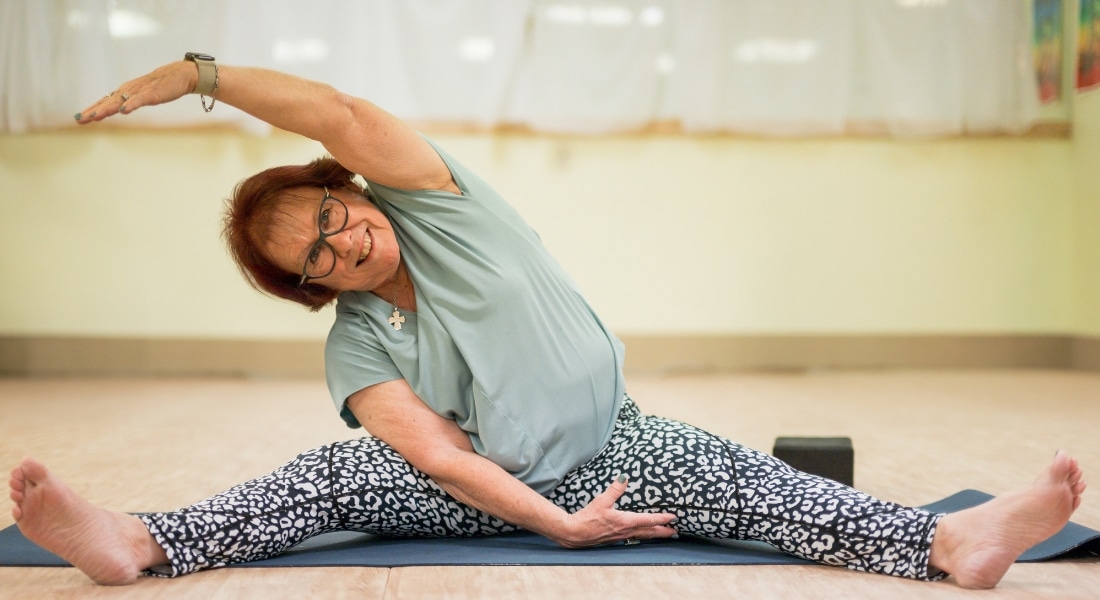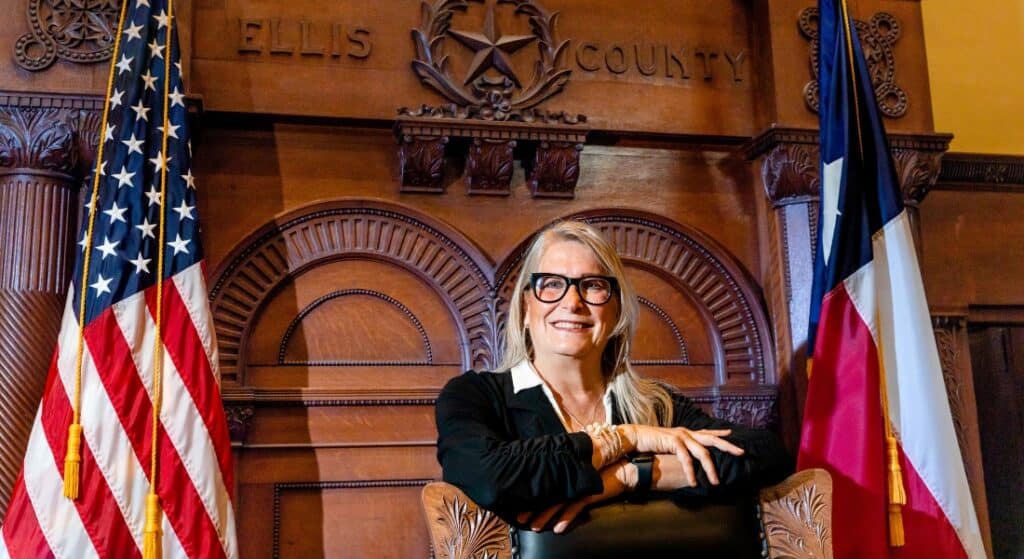Yoga became a way of life for LaNelle Maddox in her 60s, an outlet she desperately needed when she was diagnosed with breast cancer at 72.
“Yoga is my antidepressant,” LaNelle says. “It makes me feel strong.”
The active Midlothian resident is regaining her strength after surgery at Methodist Midlothian Medical Center left her cancer-free last summer.
“I can’t say enough nice things about the care I received,” LaNelle says. “They are great people. I am so pleased that Methodist is in Midlothian.”

CHOOSING LUMPECTOMY
In May, a routine mammogram at Methodist Midlothian revealed a suspicious lesion in LaNelle’s right breast. An ultrasound-guided biopsy confirmed the lump was invasive ductal carcinoma, the most common type of breast cancer.
“When you hear the word ‘cancer,’ you kind of freak out,” she says.
A consultation came next to discuss surgical options with Katrina Birdwell, MD, breast surgeon on the medical staff at Methodist Midlothian.
LaNelle was offered the option of a mastectomy to remove the breast, but she wanted to keep it. So they settled on a lumpectomy, which would only remove the tumor.
“She was willing to accept that her breast wouldn’t look perfect,” Dr. Birdwell says. “Her case is a testimony about the new age of breast cancer treatment, which is all about tailored therapy. It’s not one size fits all.”
At Methodist, we don’t just focus on your cancer. We care for you as a whole person. Learn more at MethodistHealthSystem.org
DATA-DRIVEN TREATMENT
On July 11, Dr. Birdwell removed the 3.5-centimeter mass of cancer cells, as well as nearby lymph nodes to determine whether the malignancy had spread. A pathologist examined the nodes through a microscope and found them to be free of cancer cells.
LaNelle would undergo radiation but didn’t need chemotherapy because further testing indicated she could take an estrogen-lowering pill to minimize chances that the cancer would return.
“It’s not a wild guess — it’s very data-driven,” Dr. Birdwell explains. “We sent that tumor off for a test that really helped us understand with high accuracy whether chemo would be helpful or not.”
Estrogen stimulates the growth and progression of estrogen-receptor-positive invasive ductal carcinoma.
“It was a hormone-fed cancer, and I definitely fed it hormones,” LaNelle says. “I did hormone replacement therapy for years.”
Studies have shown that hormone therapy — often used to relieve the symptoms of menopause — can increase the risk of breast cancer, especially among women in their 60s and 70s who have a family history of cancer.
LaNelle’s mother had pancreatic cancer, which is known to be linked to breast cancer. Her mother also had breast surgery for what was called a cyst but might have been cancer.
“It was a different time, and they just didn’t share that information back then,” she points out. “Thank goodness people talk about it now. When I found out, I made sure that my kids knew and to keep an eye on it.”

GET THOSE MAMMOGRAMS
Before she got cancer, LaNelle rarely performed her own monthly breast exams because she has dense tissue that can make self-exams difficult. Now that she knows what to look for, she has become far more diligent.
“Once they diagnosed it, I was like, oh, that’s what a tumor feels like,” she recalls. “My advice to everyone is to do self-exams and be religious about your mammograms.”
Now healthy and active again, LaNelle plans to get back to exercising with a trainer, practicing yoga, and traveling with both family and friends.
“I’ve been doing yoga for 15 or 16 years and working out with a trainer for that long, too,” LaNelle says. “It makes me feel so good.”






